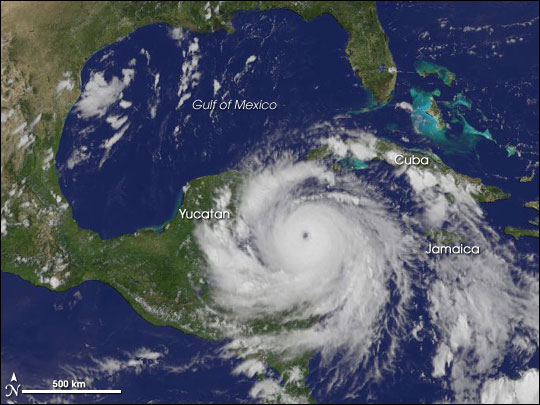Menaced by volcanoes, earthquakes and hurricanes, Mexico has made strides in forming a national plan to reduce those and other risks, but business and communities must be involved to make the country more robust in the long term, said its emergency services chief.
Ahead of a major U.N. conference on disasters in the Mexican resort of Cancun, Luis Felipe Puente told the Thomson Reuters Foundation that the country needed to focus on managing risks to its health and education services.
The country is also working with businesses to ensure their policies will help boost the resilience of Mexico’s 120 million people.
Running from May 24-26, the Global Platform for Disaster Risk Reduction is the first international summit since the 15-year Sendai Framework was hammered out in Japan in 2015, setting ambitious targets for governments to substantially cut deaths and damage from disasters by 2030.
“We’ve made a lot of progress in terms of creating policies that will allow Mexico in the next 10 to 15 years to become a resilient country,” said Puente, coordinator for Mexico’s Civil Protection Agency, in a telephone interview. “It’s important that Mexican society has a clear awareness that we can’t continue building risk.”
Puente said the Cancun meeting would be an opportunity to work out how wealthier countries in the Americas could assist the most vulnerable, such as those in the Caribbean and Central America, and how to better include risk reduction in sectors like health and urban planning.
“And in the same way with the African or European continents, to ensure we will have regional strength that will allow us to work together without borders,” said Puente.
The seven targets agreed in Sendai also cover curbing economic losses and disruption to basic services from disasters, and widening access to early warning systems and public disaster risk information.
With natural disasters intensifying as the planet warms, experts expect the Cancun meeting to provide a check-up on how countries are progressing with their strategies to put national and local disaster risk reduction plans in place by 2020.
“Mexico has already adopted the measures of the Sendai Framework for the large part,” said Puente.
“We’re continuing with our national plan – we’re missing a series of rules regarding education, we’re working very hard on the health system, and we’re working very hard to change energy production,” he added.
In the wake of a devastating 8.1-magnitude earthquake that killed thousands when it rocked Mexico City in 1985, Puente said the country had made considerable progress on ways to alert the public when tremors start, and permanently monitors the string of active volcanoes that form part of the Pacific Rim of Fire.
Cancun will also host a conference on early warning systems from May 22-23 and dozens of parallel events, all tackling the question of how to protect people, infrastructure and services from disasters.
Source: Thomson Reuters Foundation




